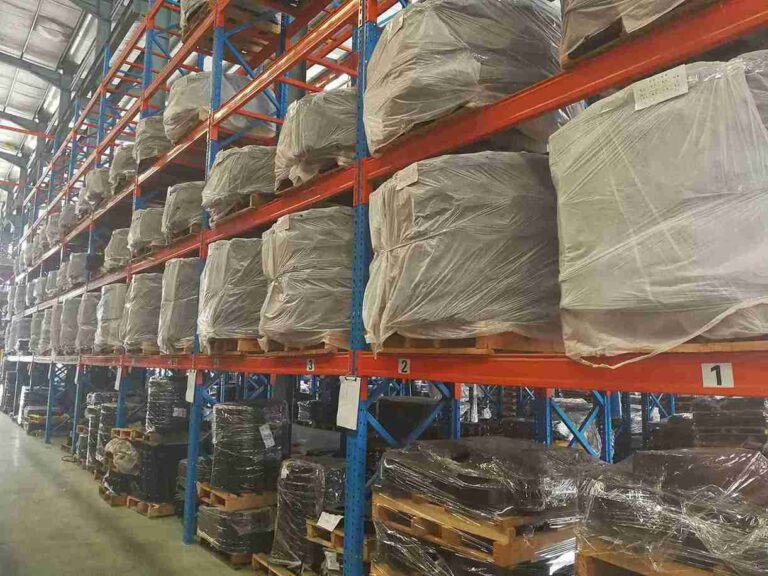📐 "First 50 Enterprise Queries Get Custom 3D Warehouse Design" Plan

Introduction: Why a Proper Beam Racking Installation Checklist Matters
A beam racking installation checklist isn’t just a formality—it’s the backbone of warehouse safety and operational efficiency. Missing a single step in the beam racking installation process can lead to catastrophic failures, including collapsed racks, damaged inventory, and worker injuries.
This comprehensive beam racking installation checklist provides a step-by-step, industry-approved methodology to ensure every pallet racking system is installed correctly the first time. Whether dealing with selective racking, drive-in racks, or push-back systems, this guide covers critical safety protocols, load capacity verification, common installation mistakes, and post-installation inspections.
By following this beam racking installation checklist, warehouse managers, installers, and safety inspectors can:
✔ Prevent workplace accidents (OSHA compliance)
✔ Maximize storage density without compromising safety
✔ Extend rack lifespan by avoiding structural stress
✔ Reduce costly rework from improper installation

1. Pre-Installation Planning: The Foundation of a Successful Beam Racking Installation
1.1 Warehouse Layout & Load Capacity Assessment
Before the first upright is anchored, a thorough beam racking installation checklist must evaluate:
- Floor conditions – Is the concrete slab level? Does it meet minimum PSI requirements (3,000+ PSI recommended)?
- Ceiling height & clearance – Will forklifts have enough room to operate safely?
- Pallet dimensions & weight distribution – Are beams spaced correctly to prevent overhang?
- Future expansion needs – Will the system allow for additional bays or levels?
Pro Tip: Using rack design software or consulting a structural engineer ensures optimal beam spacing and upright placement.
1.2 Essential Tools for a Flawless Beam Racking Installation
A proper beam racking installation checklist requires the right tools:
🔧 Torque wrench (critical for proper bolt tightening)
📏 Laser level (ensures uprights are perfectly plumb)
⚡ Impact drill (for efficient anchor bolt installation)
🛡️ Safety gear (hard hats, harnesses, steel-toe boots)
Never compromise on tools—using makeshift equipment risks structural failure.
2. Safety & Compliance: The Non-Negotiables of Beam Racking Installation
2.1 OSHA Regulations Every Installer Must Follow
The Occupational Safety and Health Administration (OSHA) has strict guidelines for beam racking installation:
- Anchoring requirements – All uprights must be secured to the floor.
- Load capacity labeling – Every rack must display max weight limits.
- Aisle width compliance – Minimum 3.5 ft for manual picking, 12 ft for forklifts.
Ignoring OSHA standards can lead to fines, lawsuits, or workplace injuries.
2.2 RMI (Rack Manufacturers Institute) ANSI MH16.1 Standards
The RMI standard is the industry benchmark for beam racking installation:
- Beam-to-upright connection strength – Must resist shear forces.
- Maximum deflection limits – Beams should not bend beyond L/180.
- Safety locks & shims – Prevent accidental disengagement.
Always follow manufacturer specs—deviations void warranties and increase liability.
3. Step-by-Step Beam Racking Installation Process
3.1 Step 1: Anchoring Upright Frames (The Most Critical Step)
A beam racking installation checklist must include:
1️⃣ Marking anchor bolt locations using a template.
2️⃣ Drilling holes with a hammer drill (never use a standard drill for concrete).
3️⃣ Inserting and torquing anchors (typically 25-30 ft-lbs).
Warning: Unanchored racks can collapse under load—never skip this step.
3.2 Step 2: Installing Braces & Ensuring Plumb Alignment
- Attach horizontal & diagonal braces for lateral stability.
- Check for plumb – A deviation >1/8″ per 10 ft requires adjustment.
3.3 Step 3: Mounting Beams & Securing Safety Locks
- Insert beam connectors into upright slots.
- Engage safety locks (prevents beams from dislodging during forklift impacts).
- Add wire mesh decking if storing small items.
Pro Tip: Overloading beams causes deflection—always verify load ratings.
4. Post-Installation Inspection: The Final Checkpoint in Your Beam Racking Installation Checklist
4.1 Load Testing & Deflection Verification
- Apply test loads (10% above max capacity).
- Measure deflection – Exceeding L/180 indicates structural weakness.
4.2 Final Safety Audit
✔ All bolts torqued to spec?
✔ No visible damage to components?
✔ Load capacity labels installed?
5. Common Beam Racking Installation Mistakes (And How to Avoid Them)
❌ Skipping floor level checks → Rack instability
❌ Over-tightening bolts → Metal fatigue & cracking
❌ Ignoring safety locks → Beams can disengage during use
Conclusion: Why a Detailed Beam Racking Installation Checklist is Non-Negotiable
A properly executed beam racking installation checklist is the difference between a safe, efficient warehouse and a hazard-prone liability. By following OSHA, RMI, and manufacturer guidelines, businesses can prevent accidents, optimize storage, and avoid costly rework.
For custom racking solutions, always consult a certified installer or structural engineer.
FAQs: Expert Answers to Critical Beam Racking Installation Questions
1. How often should beam racking be inspected post-installation?
Annual inspections are mandatory, with additional checks after any forklift impact.
2. Can I modify beam racking after installation?
Only with engineer approval—unauthorized changes compromise structural integrity.
3. What’s the minimum aisle width for reach trucks?
8-10 ft, but always consult forklift manufacturer specs.
4. How do I verify my floor can support beam racking?
Concrete must be 3,000+ PSI—conduct a load test if uncertain.
5. Are plastic pallets safe for beam racking?
Yes, but check weight limits—some plastic pallets flex more than wood.




